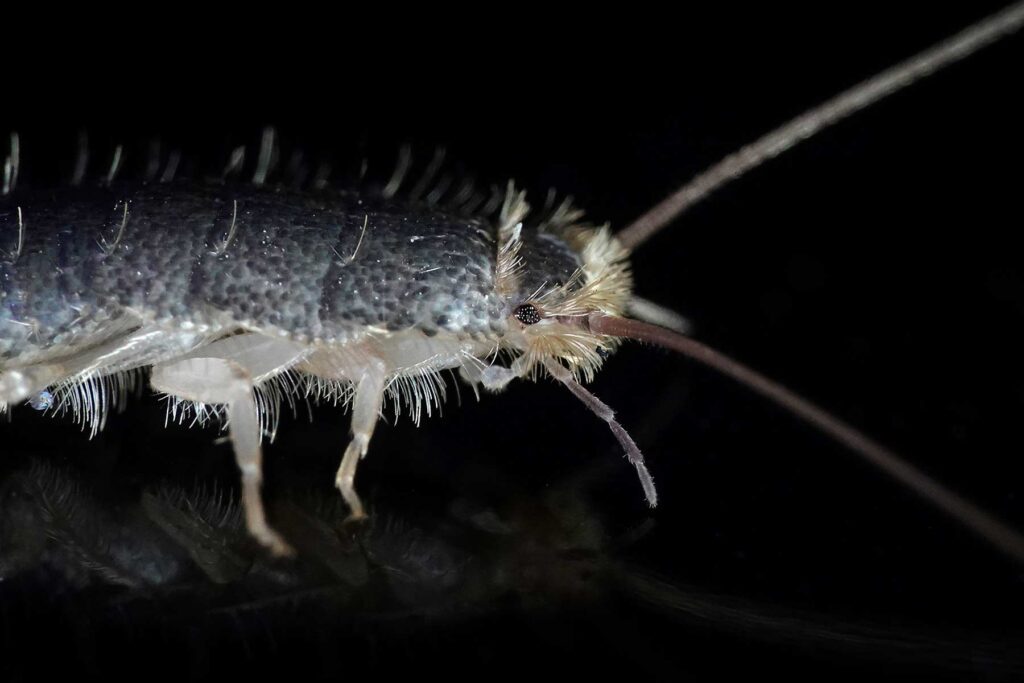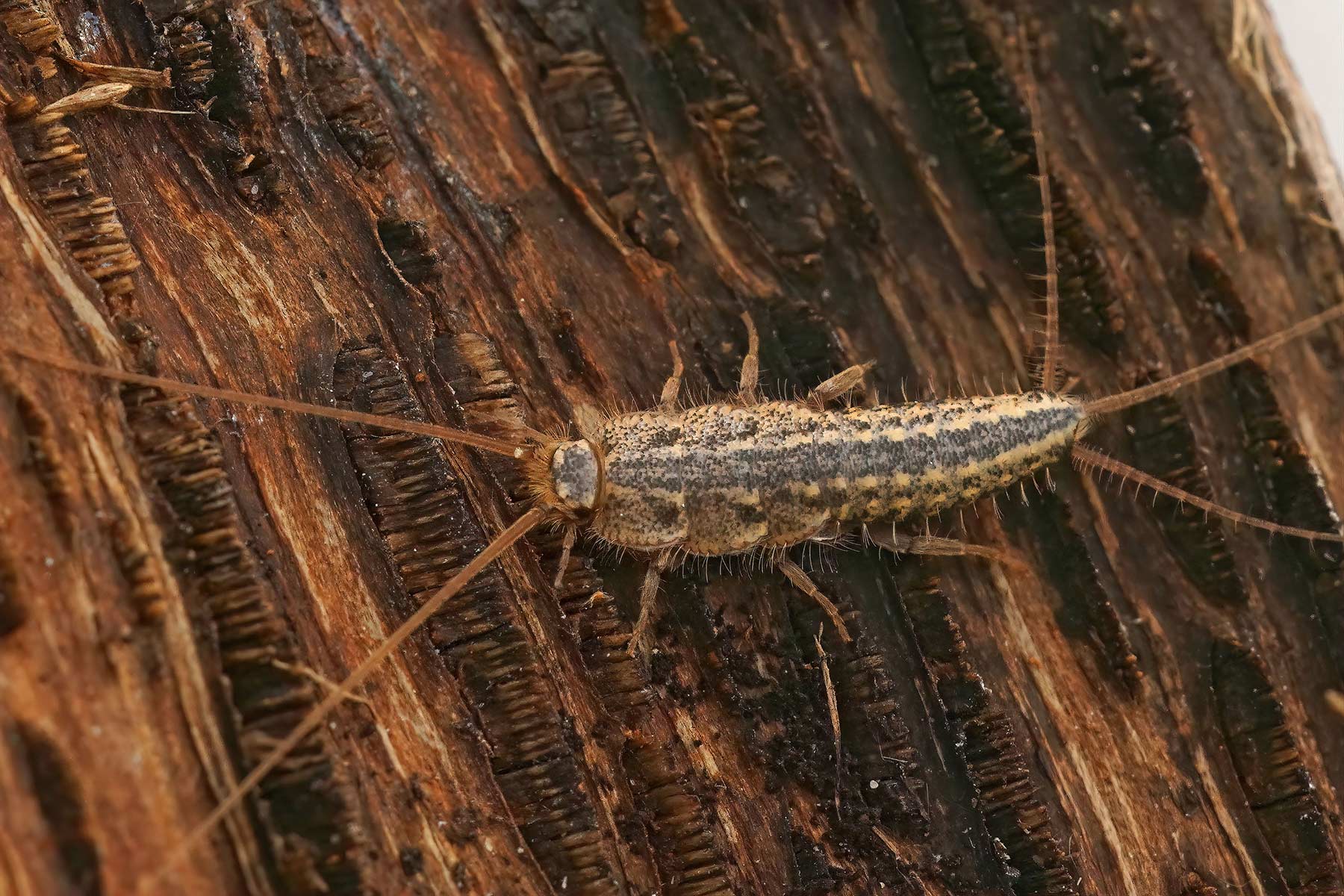As spring rains arrive across Ireland, many homeowners are busy dealing with wet gardens, muddy boots, and leaky gutters. But there’s another moisture-related issue that may be creeping in unnoticed—silverfish.
These small, silvery insects thrive in damp, humid environments, making April a prime month for infestations. While they’re often considered more of a nuisance than a direct threat, silverfish can damage property, contaminate food, and indicate broader moisture problems in your home.
Let’s take a closer look at why silverfish become more active in spring, how to spot the signs of an infestation, and what steps you can take to get rid of them—before they multiply.
Why Silverfish Love Spring
Silverfish (Lepisma saccharinum) are nocturnal insects known for their fast, wriggling movement and metallic sheen. They’re attracted to humid, dark, and undisturbed places, such as:
- Bathrooms and laundry rooms
- Kitchens, especially under sinks
- Attics and basements
- Airing cupboards and boiler rooms
April’s frequent rain and rising humidity create ideal conditions for silverfish to breed and forage. Damp building materials, water leaks, or poor ventilation can all contribute to a sudden surge in activity.
Are Silverfish Harmful?
Silverfish don’t bite, sting, or spread diseases. However, they can cause damage to:
- Paper, books, and cardboard
- Wallpaper and plaster
- Fabrics and clothing (especially cotton and linen)
- Dry food items, such as flour, cereal, and sugar
They feed on starches, sugars, and proteins, making your pantry and paper storage areas particularly vulnerable. Left untreated, a small infestation can grow into a persistent problem.
Early Signs of a Silverfish Infestation
These pests are elusive and often go unnoticed until their population grows. Here’s what to look out for:
- Sightings: Spotting fast-moving, silvery insects in bathrooms, under sinks, or in cupboards at night
- Droppings: Small black specks that resemble pepper flakes
- Shed skins: Silverfish shed their exoskeletons throughout their lives—look for tiny translucent skins near baseboards
- Feeding damage: Holes or notches in books, wallpaper, cardboard, or clothes
If you’re seeing more than one or two silverfish, there may be a hidden colony thriving nearby.

April Showers Bring Silverfish? Stop Moisture Pests Now
How to Prevent Silverfish This Spring
1. Control Moisture
Moisture is the number one factor in silverfish infestations. Take these steps to reduce humidity in your home:
- Use dehumidifiers in damp rooms like basements or laundry areas
- Ensure bathrooms and kitchens are well-ventilated with extractor fans
- Repair leaking pipes, taps, or roofs promptly
- Keep gutters and downpipes clear to prevent water damage to foundations
2. Declutter and Deep Clean
Silverfish thrive in cluttered, undisturbed environments. Tidy up potential hiding places by:
- Clearing out old cardboard boxes, newspapers, and magazines
- Vacuuming corners, skirting boards, and behind appliances regularly
- Avoiding storing items directly against walls in damp areas
3. Seal Entry Points
Like many pests, silverfish can enter through small cracks in your walls or foundations. Inspect and seal:
- Gaps around pipes and electrical outlets
- Cracks in skirting boards or tile grout
- Spaces under doors or around windows
This not only keeps silverfish out but helps reduce general moisture buildup.
4. Store Food and Fabrics Securely
Silverfish can invade your kitchen just as easily as your attic. Make sure to:
- Store dry goods in airtight containers
- Keep pet food sealed
- Store seasonal clothing in sealed plastic boxes or bags, not cardboard
DIY Traps and Natural Remedies
While not a complete solution, some homeowners have success with DIY traps and deterrents:
- Jar traps: Wrap a glass jar with masking tape and place a bit of bread or sugar inside. Silverfish climb in but can’t escape the smooth glass interior.
- Cedarwood and citrus peels: These natural scents are said to deter silverfish (though they won’t eliminate a nest).
- Diatomaceous earth: A fine powder that kills insects by dehydrating them—sprinkle around baseboards or entry points with care.
Keep in mind these solutions offer temporary relief. For long-term results, professional treatment is often necessary.
When to Call the Experts
Silverfish infestations can be extremely persistent, especially if moisture issues are ongoing. If DIY methods haven’t worked—or if you’re seeing silverfish regularly—it’s time to contact a professional.
At Discreet Pest Control, we offer:
- Detailed inspections to find hidden infestations and moisture sources
- Safe and effective treatments, tailored to your property type and needs
- Advice on long-term prevention, including humidity control and structural repairs
- Discreet, fast service throughout Dublin, Kildare, Wicklow, and Carlow
Our team understands that silverfish may seem like a minor issue—but we know how quickly they can escalate, especially in older or poorly ventilated buildings.
April Showers Bring Silverfish? Stop Moisture Pests Now
Final Thoughts
April’s damp weather may bring green shoots and fresh air—but it also creates the perfect environment for silverfish and other moisture-loving pests. Acting early in the season is your best defence.
Whether you’ve spotted one silverfish or suspect a larger infestation, don’t ignore the signs. Contact Discreet Pest Control for a professional inspection and long-term solution. We’re here to help you protect your home—quietly, quickly, and effectively.









